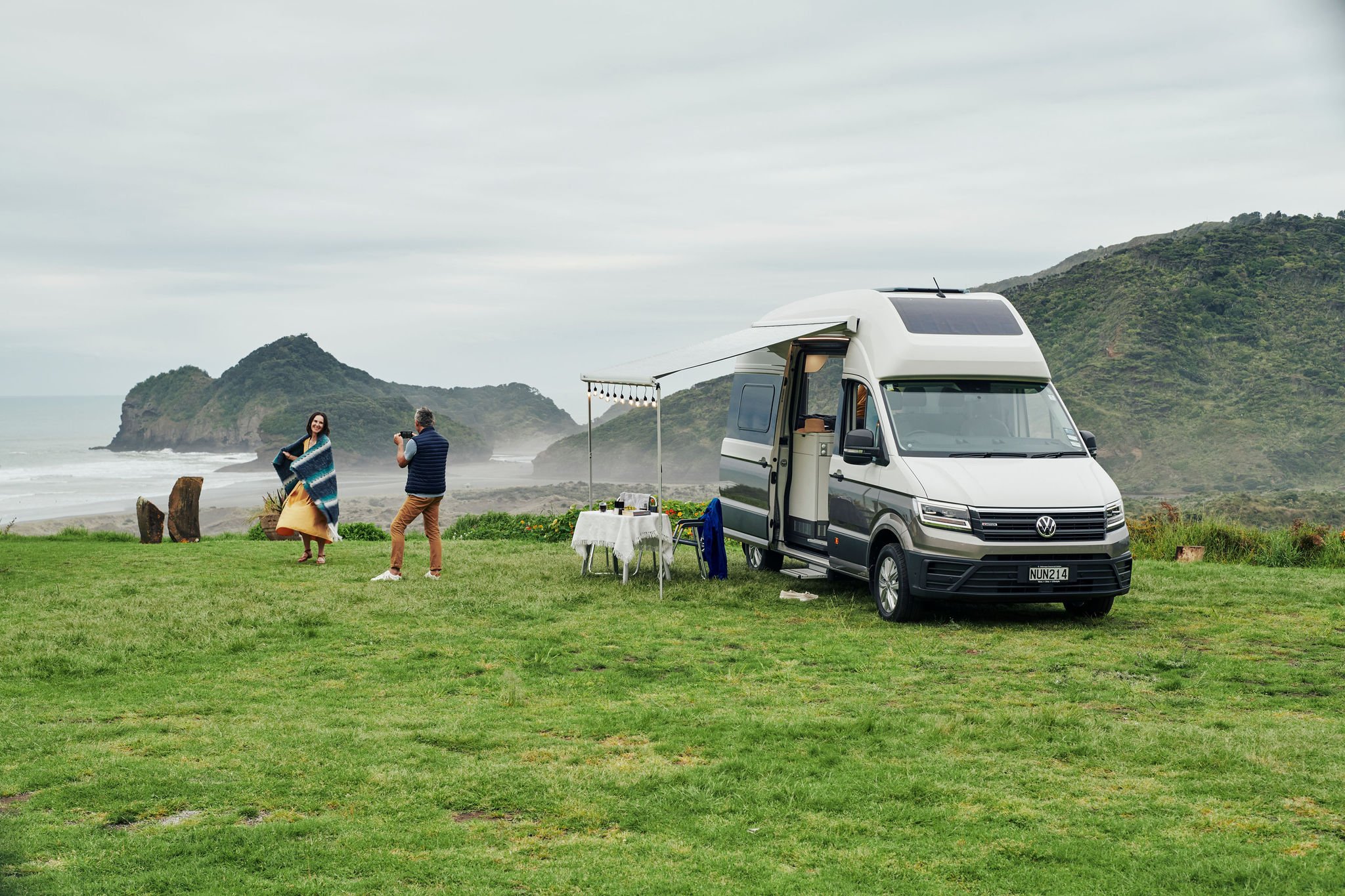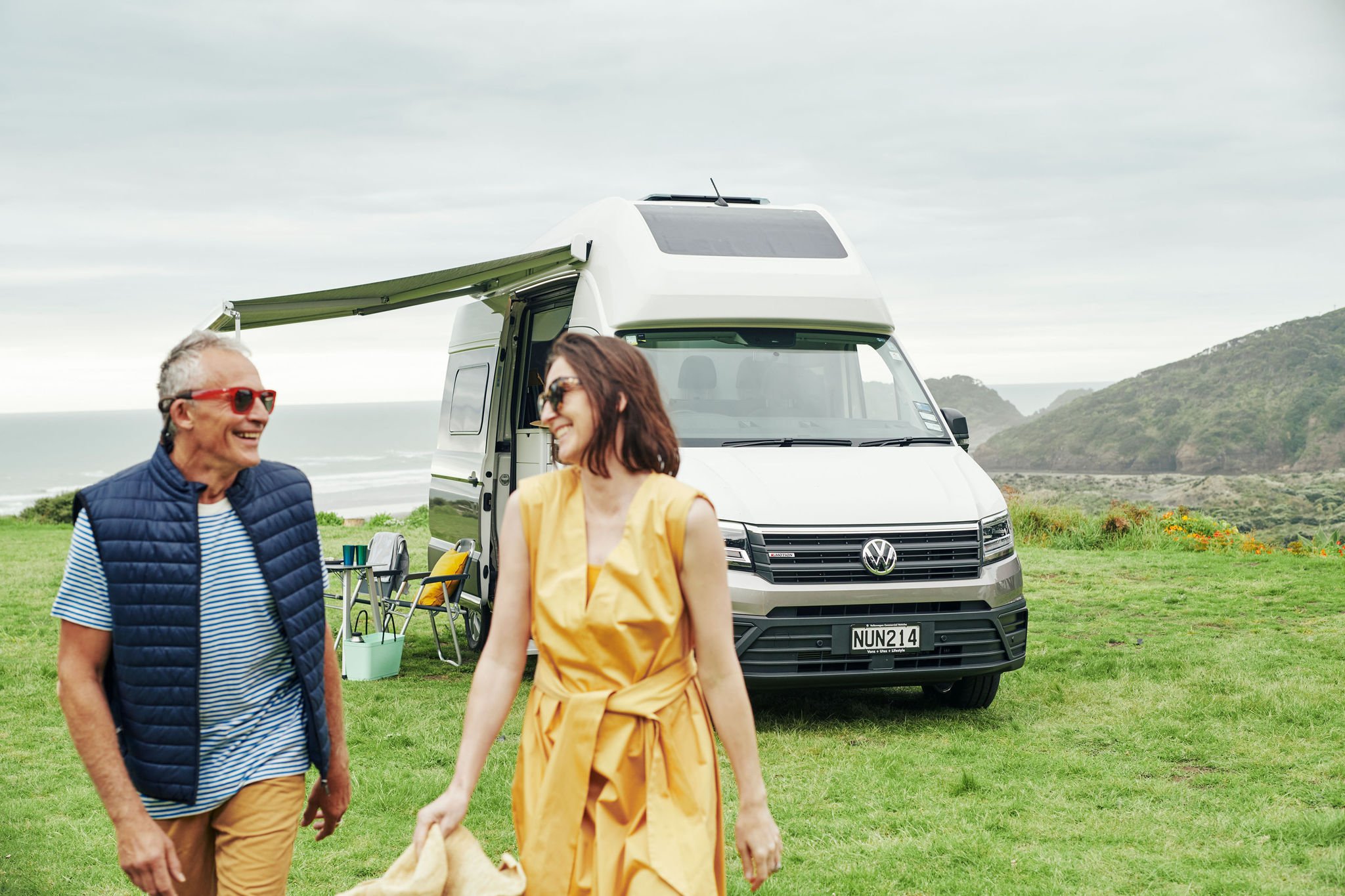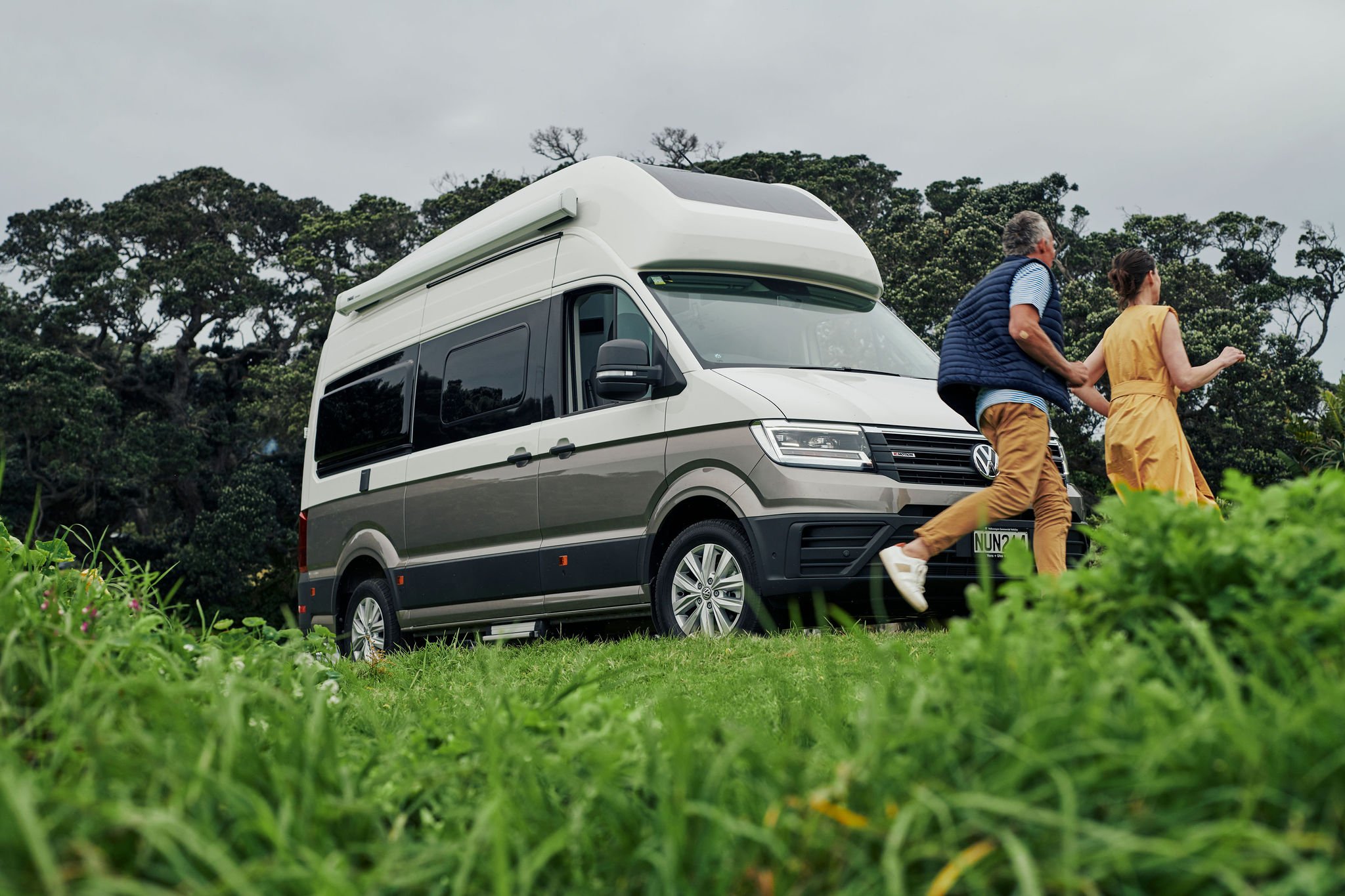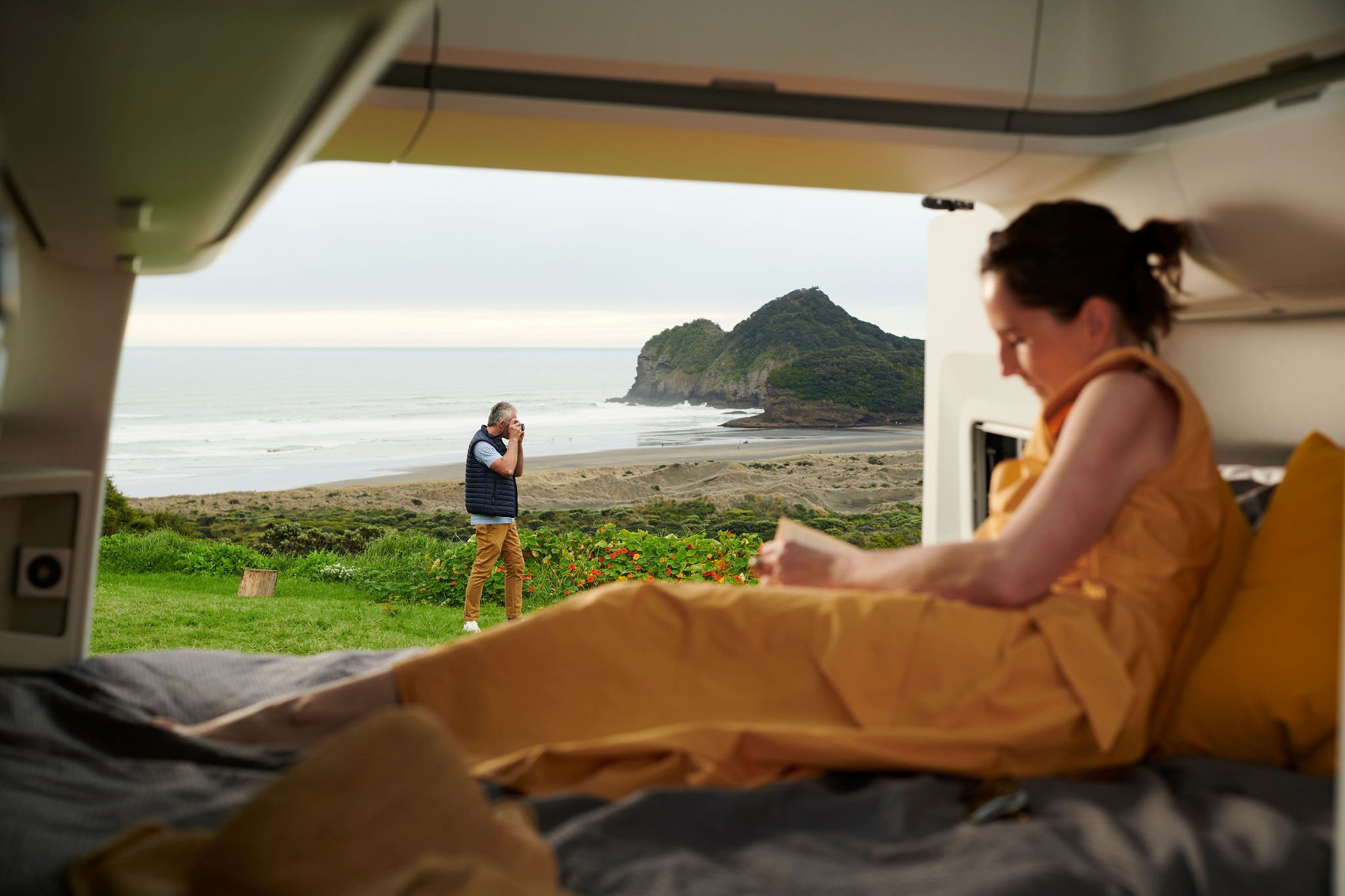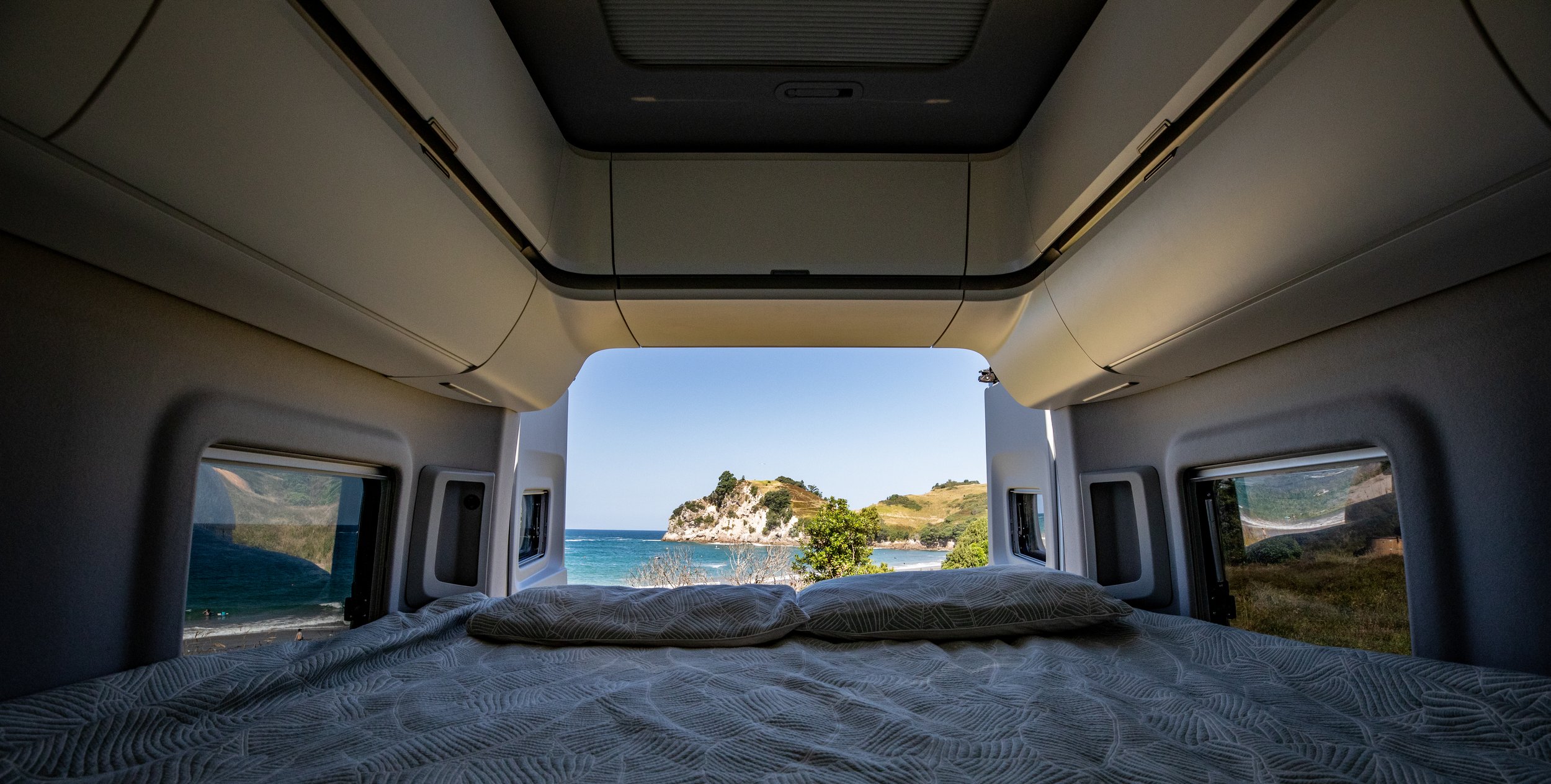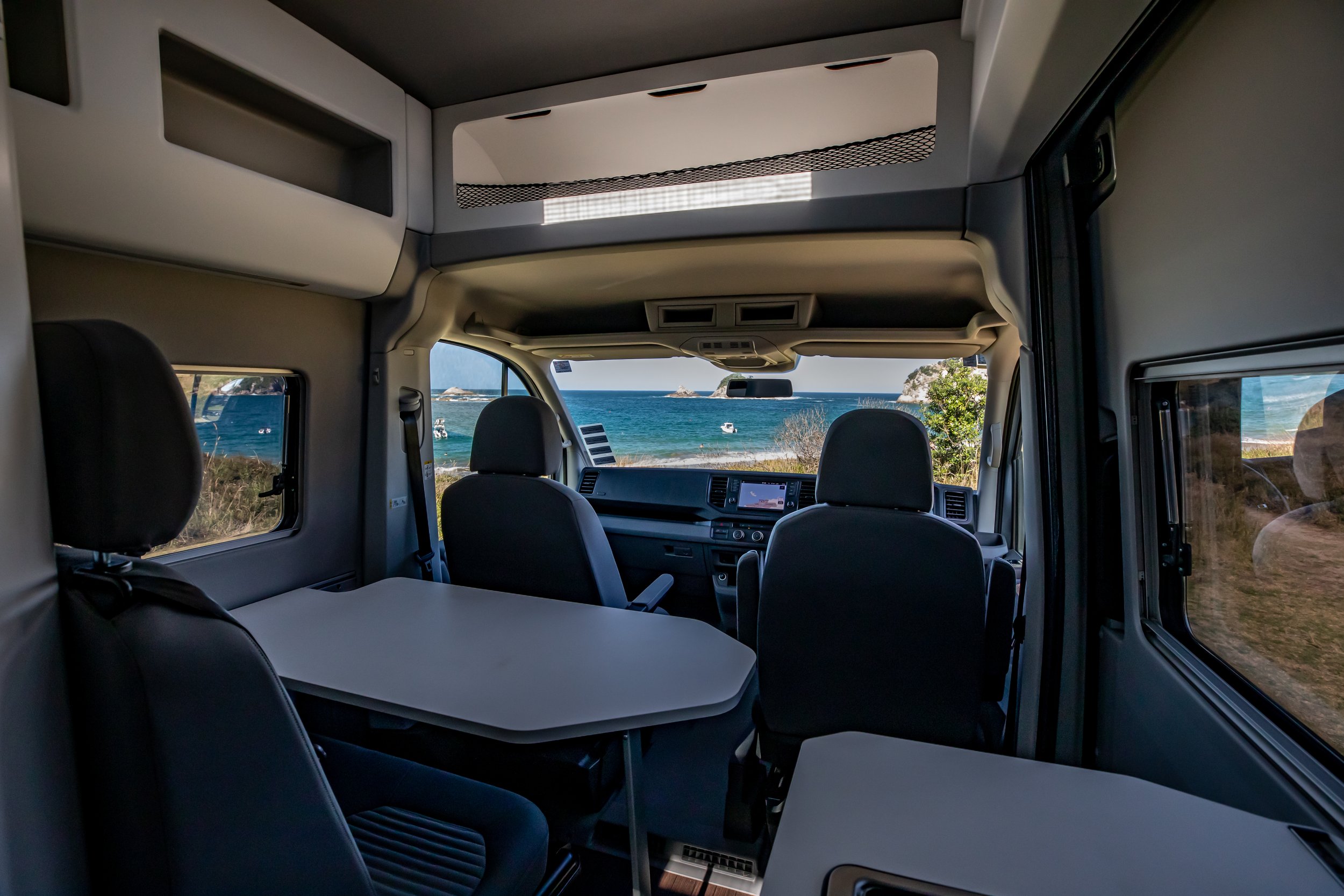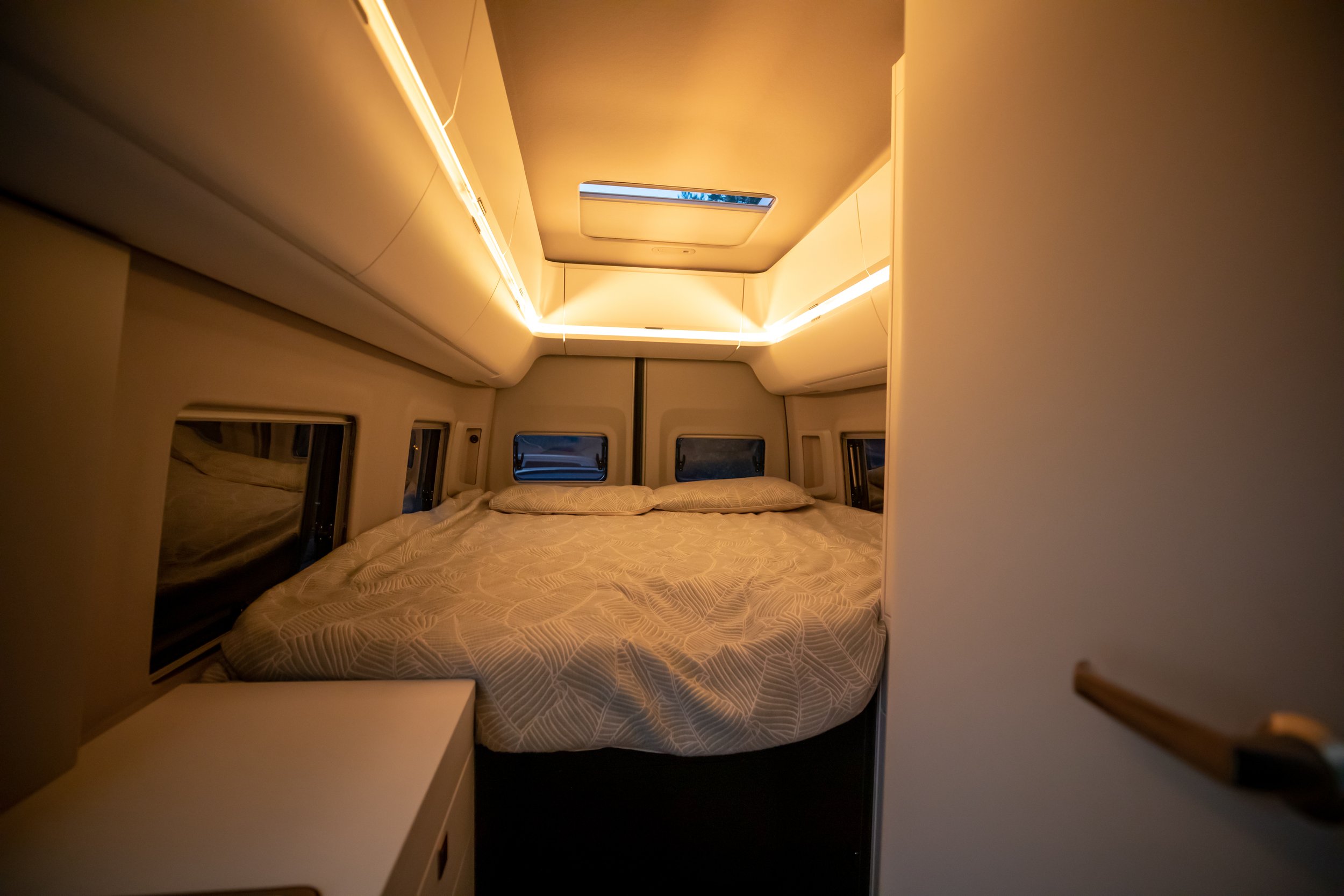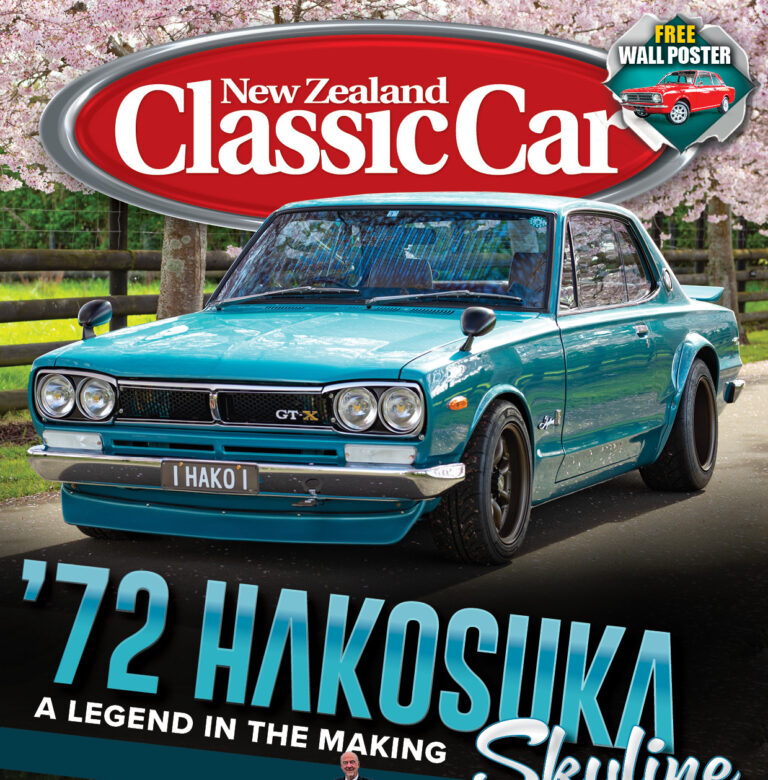When it comes to campervans there are none that have a stronger heritage than Volkswagen
The company invented the campervan concept, along with being in at the birth of the light commercial van, which was the second vehicle it produced based on the already epic Volkswagen car. You may already know that the Volkswagen Type 2 design, or Kombi, was based on the bare bones chassis Plattenwagen that Volkswagen workers had pressed into service to ferry components around the factory.
Dutch VW importer Ben Pon apparently saw these in operation at the factory and in 1947 came up with a simple sketch of a practical one-box vehicle. It became one of the first commercial vans after Citroën’s snub-nosed corrugated iron H van, released in 1947. The concept was rapidly copied by other carmakers for their own carry-alls. Drivers shared the cab with the front-mounted engine in these other versions, which meant most of the opposition’s vans had a slight advantage — they could have a full height barn door or tailgate opening. However, the simplicity and reliability of VW’s air-cooled, rear-engine design still appealed to the caravanning public. The rear-mounted engine was also quieter when driving, and the larger side-opening door was not a disadvantage for campers. As you don’t need to leave a corridor for access from rear doors, a semi-permanent bed could be sited across the back. The side-opening door gave immediate access everywhere.
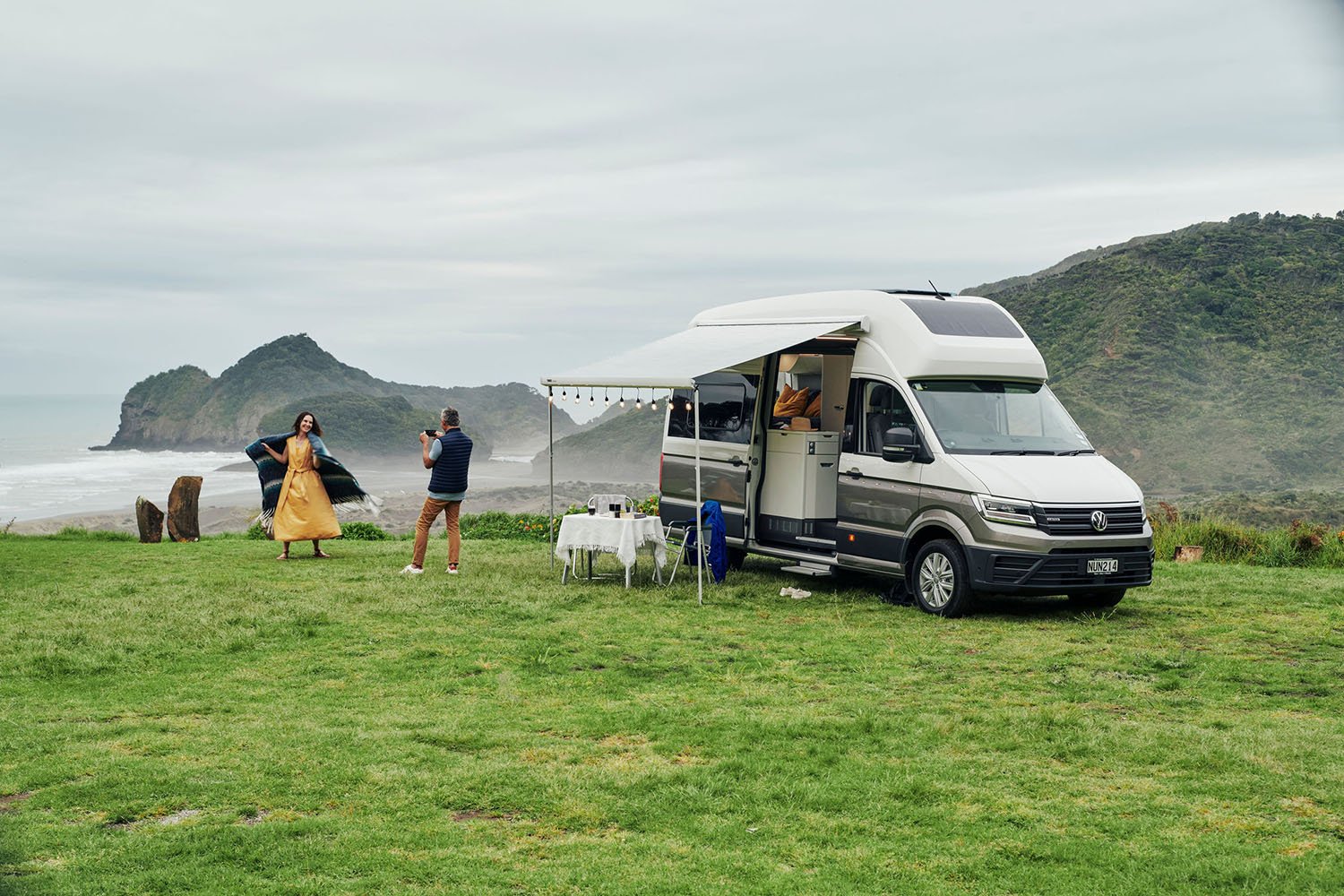
Enter the ’60s
As the ’50s rolled into the ’60s, a new generation threw off the anxious austerity of the immediate post-war era and literally let its hair down. The VW Kombi, often subjected to psychedelic paint jobs, hit the big time as the ultimate freedom machine. It’s unchallenged in that role even today despite — and even because of — the increasing demands for complexity, safety, and comfort. However, the simple and pure old-style VW Kombi is now too ‘back to basics’ for today’s safety and compliance requirements and would be impossible to build as a commercial vehicle.
This is especially the case in New Zealand. While staunch campervanning fans are just as likely to coo over a Kombi as the rest of us, they will quickly notice the lack of self-contained toilets and home comforts. Despite the Kombi’s iconic status, this lack of facilities makes them as unwelcome in beauty spots as the hordes of holidaying Hiluxes with mattresses in the back, and rough and ready campers. A free-and-easy attitude to waste management is not going to win any favours from the locals, or other campervanners.
Must-haves
Modern vehicles must have active and passive safety systems, power steering and brakes, decent headlights, and a host of other electrical equipment just for the cabin and driving experience. Satnav, electric windows, mirrors, cameras, and air conditioning are all on the must-have list. Besides, not all of us are as young and carefree as we used to be. Even when we travel we expect plumbing. We like electronic entertainment, or at least the possibility of it. We like to keep perishable food and drinks cold, and the cabin warm at night. Those are all now important elements in the quest to be able to relax. We don’t have the time or inclination for a more basic existence.
And what’s more the price of split windscreen or even bay window Kombis is now so high at well over $100k, a number of potential buyers will quickly opt for more practicality for their money.
The split-window first generation Kombi was made from 1950–1967 in Europe and the USA, and until 1975 in Brazil. The bay window or second generation model ran from 1967–1979 in Europe and the USA, and on until 2013 in Brazil.

The Kombi concept continued through the different iterations of the Transporter van which replaced the original Type 2, but ended with the T5 Transporter in 2015.
In recent years, campervans in New Zealand have predominantly evolved into inelegant plastic boxes pasted onto a commercial vehicle chassis. They’re functional, but at the price of a good deal of the romance of the road.
There’s no doubt there’s still a market for style as well as substance in the ever-growing campervan and bus market, and Volkswagen has got back into the market here with the all-new Grand California. It’s a grown-up Kombi. The all-in-one van body and alloy wheels immediately mark the VW out as a classier and handier vehicle than the ungainly and boxy conversions, and the two-tone colour scheme adds another sleek and distinctive feature. There’s no doubt the new VW is a head-turner, just like the original Kombis.
The cute original Type 2 was conceived with a weight of around 650kg, and a payload of the same. Given the list of prerequisites for a modern campervan, there was no way to make the modern version that light. Building the new Grand California on a larger scale also affords much more space and that capacity is easily handled with a modern engine, brakes, and four-wheel drive.
And the pluses
And let’s not forget the main benefits — it has its own separate wet room, which has a toilet shower, a foldaway sink, and storage for toiletries, wet swimming gear, and towels, immediately raising the standard of living well beyond the unavoidable clutter of the classic Kombi. It also has the necessary tankage (110L) for fresh water and grey water. It even has a separate outdoor shower for getting rid of sand or other muck, or just for fun.
It has full standing headroom throughout the interior, without having to erect a pop-top. Some campervans only give headspace for one person standing in one spot, so this is a definite step up.
One of the other key advantages of a clean sheet factory vehicle is the level of integration possible with built-on, or optional equipment. A simple touchpad gives one-shot control of lighting, heating, solar power, and monitoring water and battery levels. A dual fuel system allows off-grid gas heating or mains heating when plugged in, or you can specify roof-mounted air conditioning. There are electrical and USB sockets where you need them, and a 70-litre fridge/freezer in the main workstation, which is sited in the main doorway affording easy access to drinks from outside too.
There’s no need for a roof rack to strap equipment onto, because essential equipment like a camping table and chairs have been built in. There’s also 600 litres of storage in the smaller of the two variants. It wouldn’t surprise me if that was the total interior volume of the old Kombi.
The quality of fixtures and fittings in the Grand California is everything you’d expect from a thorough German design team. Workbench extensions and beds fold and retract as designed, and of course fittings like skylights are watertight and insect proof. There’s even an electric fold-out door step.
Driver assistance
The standard car interior of the Grand California makes this large vehicle as easy to pilot as the car it so resembles up front, especially with conveniences like 360-degree sensors, parking assistance, and a rear view camera.
The Grand California is powered by a two-litre turbo diesel 130kW eight-speed auto with all-wheel drive. They are big vehicles but still capable of car-style economy, with a combined economy of 9.5l/100km.
The original Kombi started out life with a 1.1 litre air-cooled flat-four petrol engine, progressing all the way up to a mighty 1.5, and even a 1.6 in versions produced in Brazil after 1967. But throughout its life the original Type 2 Kombi placed a certain obligation on its owner to acquire a set of tools and become familiar with the workings of its chug-a-chug motor, and at least have the ability to file and reset a set of points.
People don’t have time for that nonsense these days and the increasing sophistication and reliability of modern vehicles means very few modern owners would have any idea — let alone inclination — about where to start. That five-year warranty is what most people prefer to see.
The original Kombi was all about freedom, although it imposed its own limitations. As Volkswagen says: “Now life is more about relaxation than liberation.”
To find out more about Volkswagen’s Grand California, click here.



